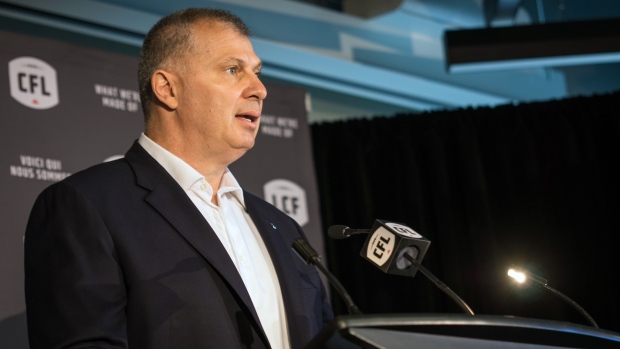May 17, 2019
The CFL’s new CBA makes a lot of sense
Three-year deal allows the league to hold the line on costs, provide better working conditions for players and position itself for growth, Dave Naylor writes.
By Dave Naylor

So all in all, getting a new collective agreement in time for this Canadian Football League season turned out to be a pretty simple affair.
It took a little more than two months, with neither side engaging in much public bickering before a tentative deal was reached this week ahead of the opening of rookie camps to ensure there would be no significant interruption to the business of football.
All that remains now is for the players to ratify the deal with a vote (likely on Monday) to put matters to bed for the next three years.
Getting the deal ratified might not have seemed like an absolute certainty when details of the agreement first began to emerge, mostly on social media, on Wednesday. But when you start to peel back the layers, it’s a deal with which the players should be extremely pleased.
Let’s start with the most disappointing aspect of the deal for many: The salary cap is only guaranteed to increase by $50,000 for each of the three years, which is an annual increase of less than one per cent.
That’s a definite win for the owners, but in a league where most revenue streams are flat and six of nine teams last season operated in the red, what were the players expecting?
What's significant is that the players additionally secured a 20 per cent share of any new media revenue, be it from domestic broadcast rights or from outside of Canada as part of the league’s emerging international broadcast aspirations. By doing so, the league guaranteed that the players would share in potential prosperity while protecting cost certainty at the same time.
So for example, if the CFL is to sign a broadcast deal in Mexico for $5 million per season, $1 million of that would go to the players, which translates into an increase in the cap of roughly $111,000 per team.
That kind of money would go a long way towards covering the costs of increasing the league’s minimum salary from $53,000 to $65,000 without having to force veterans to take pay cuts, which is apparently what the union was thinking when it negotiated those two aspects of this deal.
Part of that international broadcast strategy includes adding ‘global’ players to the roster – one per team this season and another in 2020. The fact this is occurring without the loss of any jobs for Canadian or American players is another definite win for the CFLPA.
But their biggest win comes in the area of health and safety. Up until this collective agreement, a CFL player suffering a serious injury in a game had his rehabilitation costs covered for only 12 months. That will expand to 24 months this year and 36 next season.
This was the players’ most important issue headed into negotiations and one where the league’s existing position looked irresponsible and heartless. It was the most logical place for the players to score their biggest win and they did.
It will come at no small cost to the teams, who must now pony up roughly $400,000 each to cover the additional insurance for injury rehabilitation.
That money could have gone to boost the salary cap by that same amount per team, but the players’ association did the right thing by prioritizing better working conditions over adding roughly $3.5 million dollars in salaries that would have flowed up to the top 20 per cent of players.
There are some common-sense initiatives in this deal as well, like actually counting Canadian quarterbacks as Canadians and allowing a period of “legal” tampering before free agency, as other leagues have done.
So what do the players have to be unhappy about? Not a lot.
The CFL has enjoyed a period of relative stability for more than a decade but its profitability remains its biggest challenge.
Changing that is the job of current commissioner Randy Ambrosie, the former Bay Street CEO who is determined to double league revenues through his international vision for the CFL.
This deal allows the league to hold the line on costs, provide better working conditions for players and position itself for growth in which the players can share.
In a league where things don’t always make sense, the CFL’s new collective agreement absolutely does just that.

